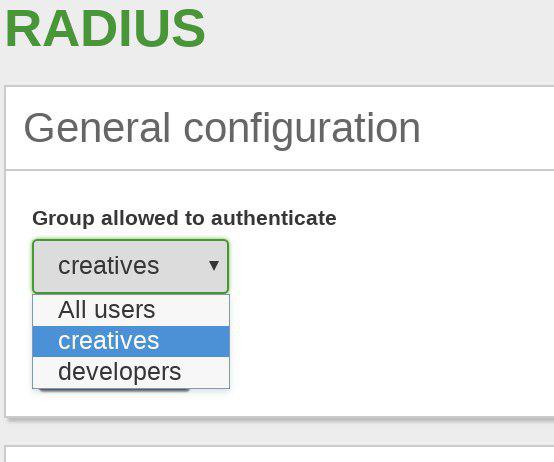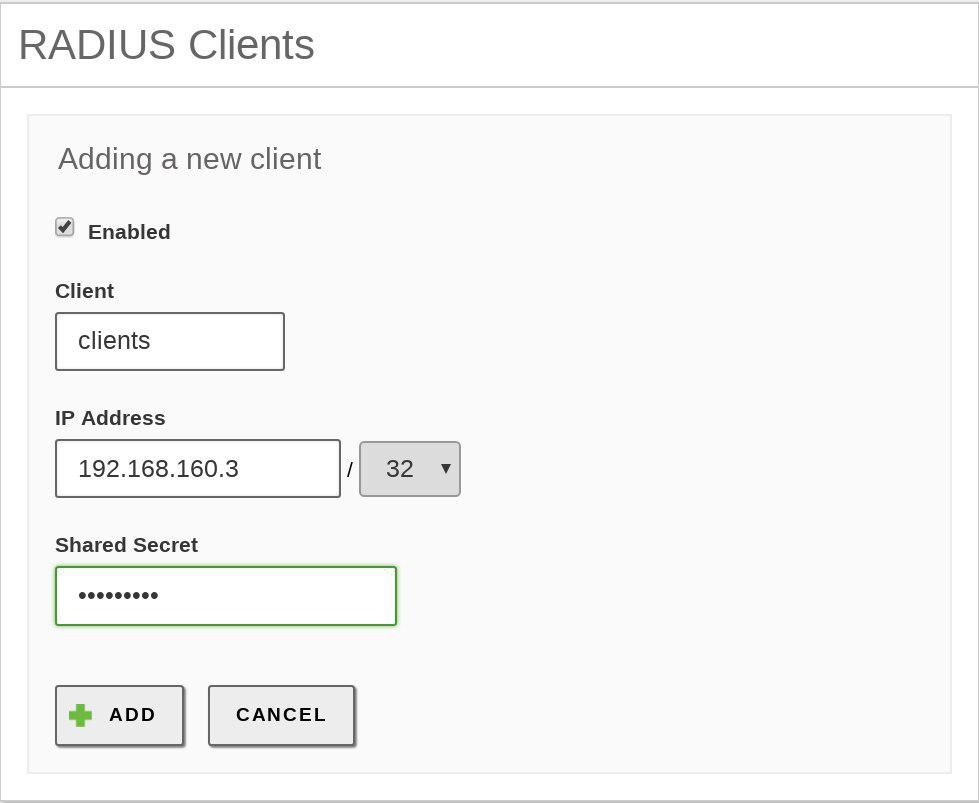Network authentication service (RADIUS)¶
Zentyal integrates the FreeRADIUS [2] server, the most popular in Linux environments.
| [2] | http://freeradius.org/ |
Configuring a RADIUS server with Zentyal¶
To configure the RADIUS server in Zentyal, you need first to check in Module status if Domain Controller and File Sharing is enabled, because RADIUS depends on this.
You can create group and its users from the menu *Users and Computers > Manage* . The configuration options for users and groups are explained in detail in chapter Domain Controller and File Sharing .
Once you have enabled Doamain Controller and File Sharing and you have added groups and users to your system, you need to enable the module in Module status by checking the Radius box in Module Status.
To configure the service, go to RADIUS in the left menu. Here you can define if All users or only the users that belong to a specific group will be able to access the service.
Then, you can define, what devices are going to send authentication requests to Zentyal, for that, you need to create a new RADIUS client:
For each client, you have to define the following:
Enabled:
Indicates if RADIUS client is enabled or not.
Client:
The device’s name used for identificate it.
IP Address:
The IP address or range of IP addresses which the device is allowd to sent requests to RADIUS server.
Shared password:
Password used to authenticate and encrypt the communications between the RADIUS server and the device. This password must be known by both parts.

